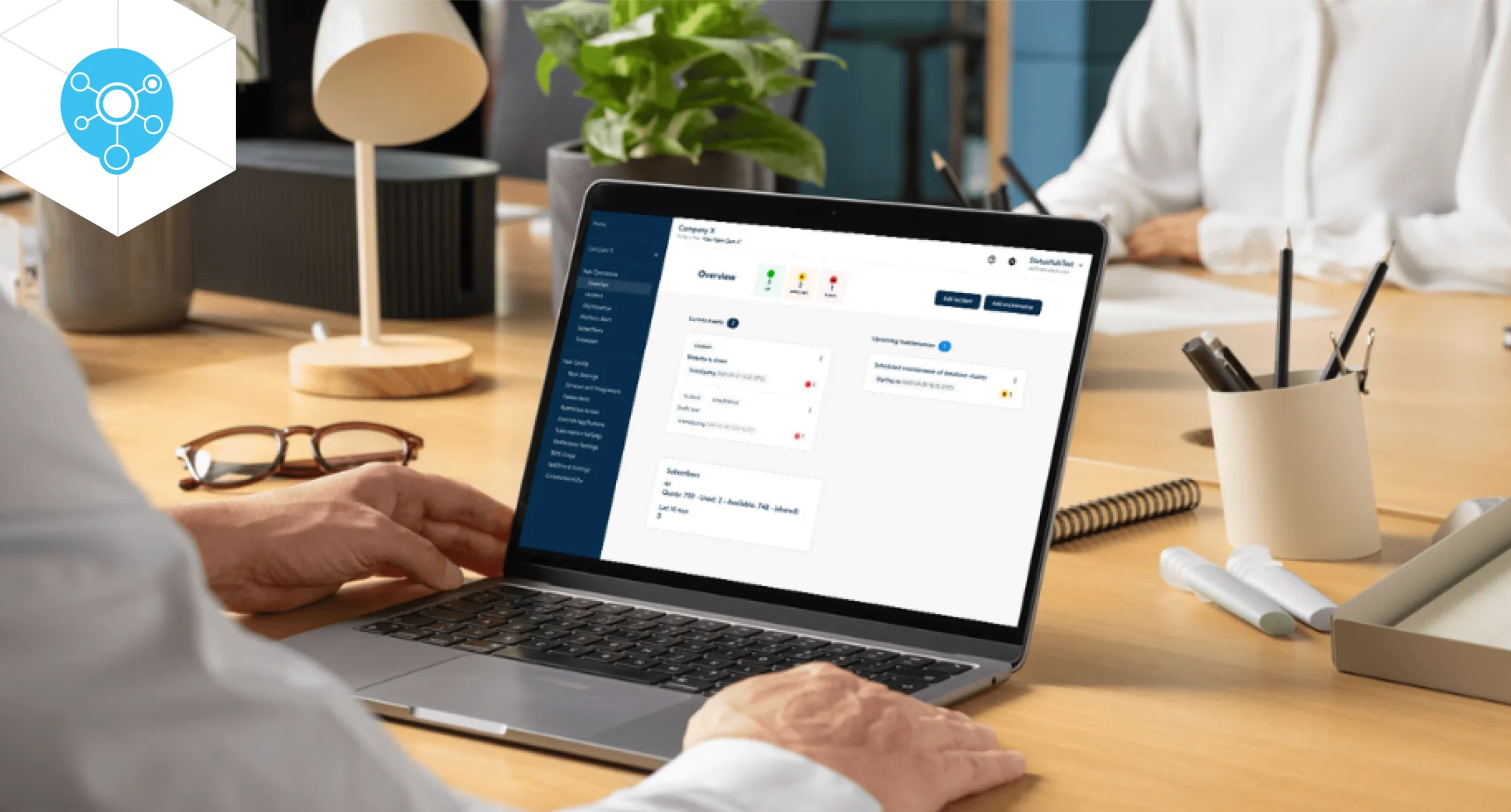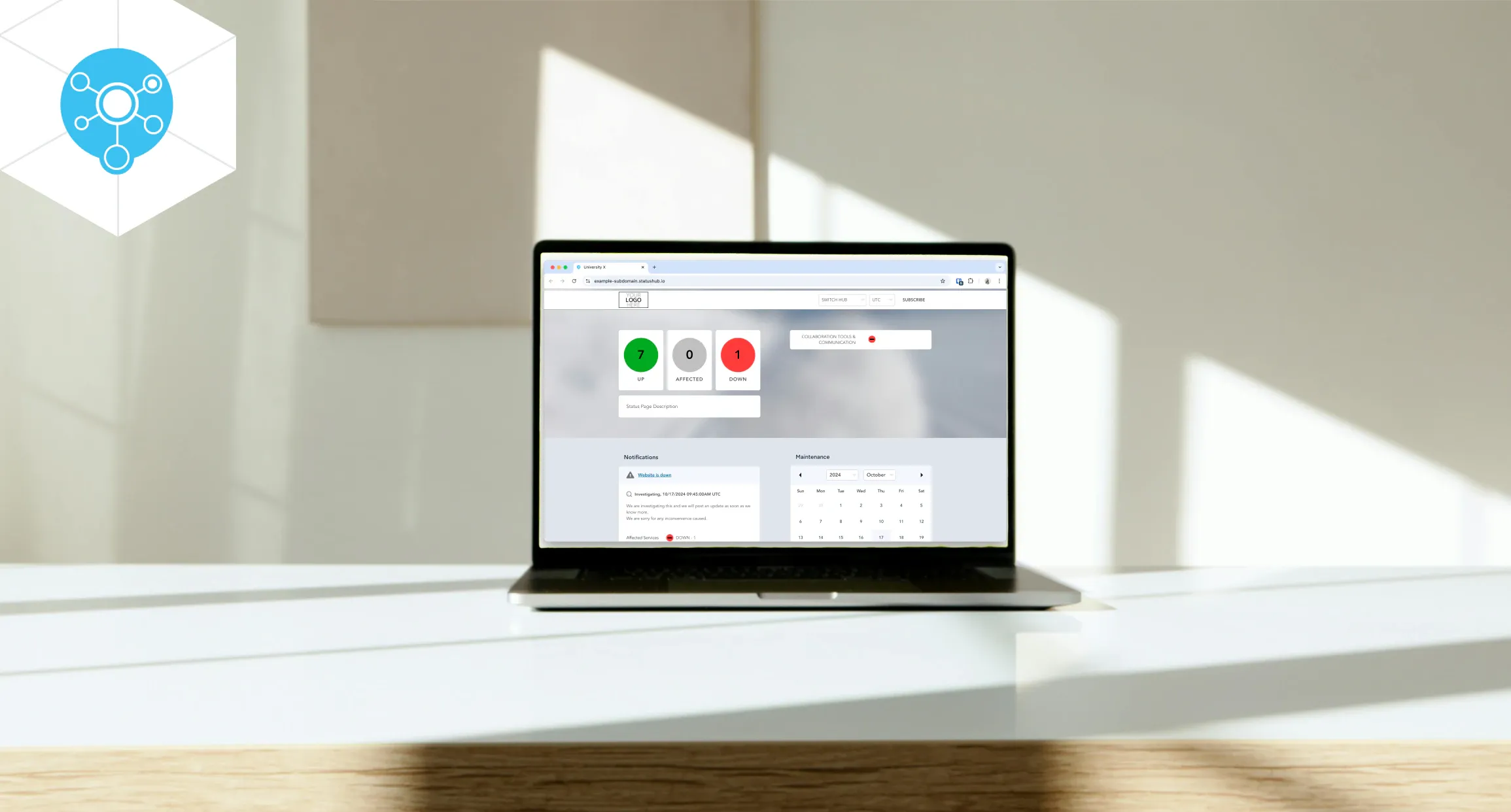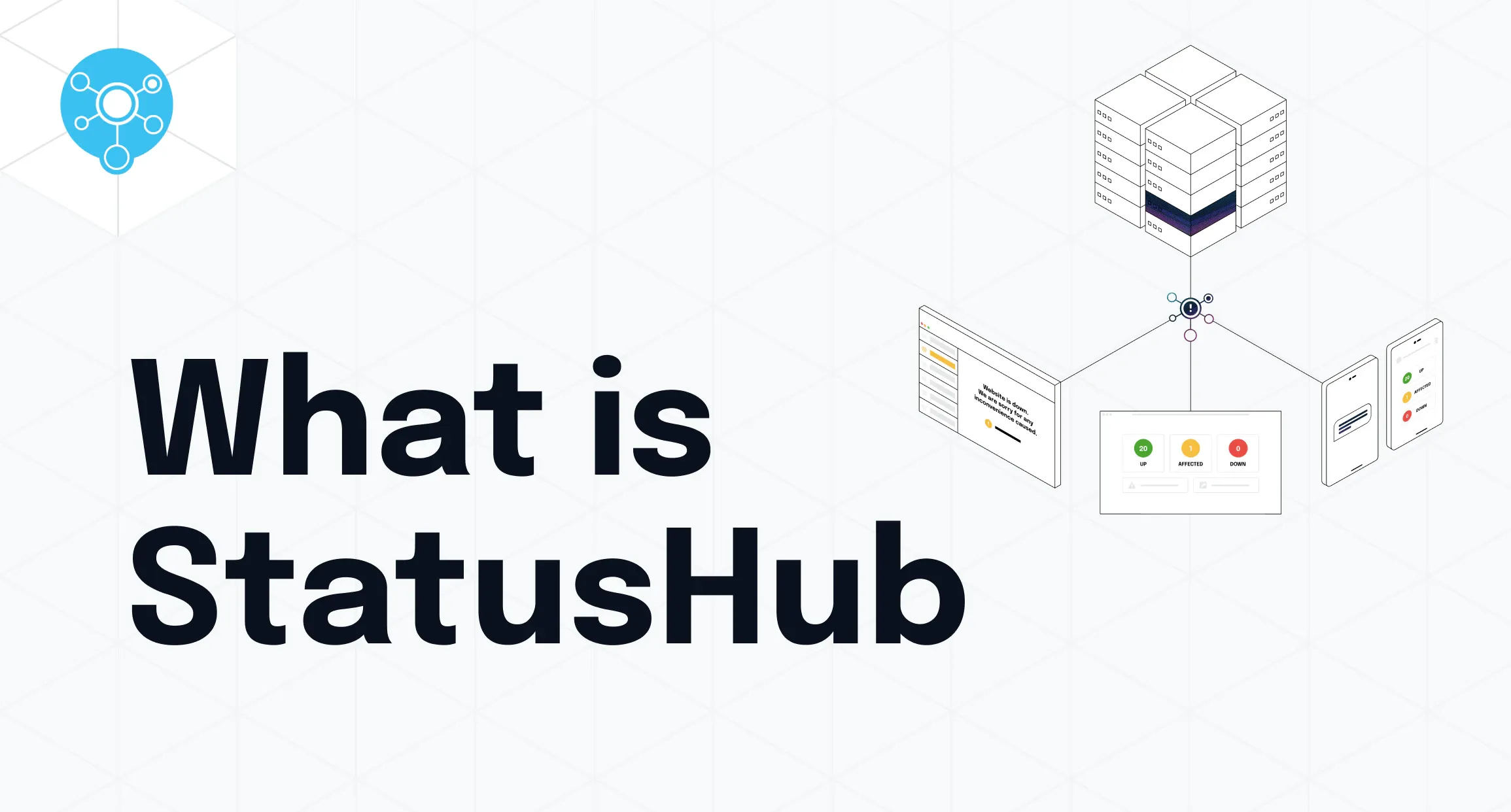The reliability and availability of IT services are paramount in today's digital landscape. When an IT incident occurs, it can disrupt business operations, affect customer trust, and lead to financial losses. Therefore, timely and effective incident communication during these incidents is crucial. It not only mitigates the impact of the incident but also helps maintain transparency and trust with users.
A well-maintained service status page is a vital tool for downtime communication. It serves as a centralized platform where updates are provided in real-time, ensuring that all stakeholders are informed about the status of services. This blog will explore the best practices for using status pages effectively during IT incidents, covering key aspects such as:
Defining incidents;
Preparing communication plans and;
Using various communication channels.
Define What Constitutes an Incident
One of the foundational steps in IT incident management is having a clear definition of what constitutes an incident. This ensures that everyone in the organization understands when an incident has occurred and that the appropriate response is needed. Without a clear definition, there can be confusion about what qualifies as an incident, leading to inconsistent communication and delays in response.
Best Practice: Establish Severity Levels to Categorize Incidents and Tailor Communication Accordingly
To manage incidents effectively, it's essential to establish severity levels and team roles. Many organizations use a standardized severity definition system, typically ranging from minor issues (e.g., performance degradation) to critical incidents (e.g., complete service outages). For example, it is recommended to use a three-tier severity system to eliminate ambiguity on security incidents and ensure that everyone understands the significance of an incident and the urgency required for response.
Prepare Incident Communication Plans in Advance
Preparation is key to effective incident communication. When an incident happens, there's no time to create a communication plan from scratch. Having a prepared plan ensures that you can respond quickly and efficiently, providing different stakeholders with timely and accurate information. A well-thought-out communication plan reduces the chaos and confusion that typically accompany incidents.
Best Practice: Develop Templates, Runbooks, and Pre-Approved Messaging to Ensure Swift Action
Developing templates, runbooks, and pre-approved messaging is a crucial part of preparing for incidents. These resources provide a framework for your communication, allowing you to quickly and consistently inform stakeholders about the status of an incident.
Templates: Create templates for different types of incidents. This could include initial incident reports, status updates, and resolution announcements. Having these templates ready means you only need to fill in specific details during an incident, saving valuable time.
Runbooks: Runbooks are detailed guides that outline the steps to take during various incident scenarios. They should include instructions for identifying the incident, escalating it to the appropriate team members, and communicating with stakeholders.
Pre-Approved Messaging: Pre-approve messaging with internal and external stakeholders, including senior management and legal teams, to avoid delays in getting important information out during an incident.
Utilize a Dedicated Status Page to Communicate Incidents
A dedicated status page serves as a central hub for communicating the status of your services during an incident. It provides a single source of truth where users can find real-time updates about the operational status, ongoing incidents, and resolutions. This centralized approach helps to reduce confusion and ensures that all stakeholders have access to the same information.
Status pages are especially valuable because they provide transparency and build trust with users. When an incident occurs, users want to know what is happening and what is being done to resolve the issue. A dedicated IT service status page allows organizations to communicate this information clearly and efficiently.
Best Practice: Ensure the Status Page is Easily Accessible and Provides Real-Time Updates
To maximize the effectiveness of a status page, it should be easily accessible and provide real-time updates. Here are some key practices to consider:
Accessibility: Ensure that the status page is linked to your main website, support pages, and other relevant sections. This makes it easy for users to find and check the status page when they need information.
Real-Time Updates: Provide real-time updates on the status page to keep users informed throughout the incident lifecycle. Use automated tools to push updates as soon as new information is available, minimizing delays in communication.
Subscription Options: Offer users the option to subscribe to updates via email or SMS, so they can receive notifications without having to constantly check the status page.
Offer Subscription Options for Updates
Allowing users to subscribe to incident updates enhances the communication process by keeping them informed without requiring them to constantly monitor the status page. Subscription options such as email or SMS notifications provide a proactive way to reach users with important updates. This approach reduces the support burden as users receive timely notifications about the incident's status, helping to manage their expectations and reduce anxiety.
Best Practice: Enable Email Subscriptions so Users Can Receive Notifications Directly
To implement effective subscription options for updates, consider the following practices:
Email Subscriptions: Allow users to sign up for email notifications directly from the status page. This ensures they receive updates as soon as new information is available. Tools like Uptime Robot and Squadcast provide features to enable email subscriptions easily.
Customization: Let users customize their subscription preferences, such as selecting specific types of incidents or components they want to receive updates about. This ensures they receive relevant information without being overwhelmed by notifications.
Transparency: Clearly communicate how subscription information will be used and ensure users that their data will be protected. This builds trust and encourages more users to subscribe.
Use Multiple Communication Platforms or Channels
Reaching users through multiple communication channels is crucial for comprehensive ITIL incident management. Different users have different preferences for receiving information, and relying on a single channel can limit the reach and effectiveness of your communication efforts. By using a combination of status pages, email, social media, and chat tools, organizations can ensure that their messages are received by the widest possible audience across all communication channels.
Best Practice: Combine Status Pages with Email, Social Media, and Chat Tools for Comprehensive Coverage
To achieve comprehensive coverage during an incident, consider the following best practices:
Status Pages: Use dedicated status pages as the primary source of information. Ensure they are updated in real-time and include detailed information about the incident and its resolution.
Email: Send email updates to users who have subscribed to notifications. Email is a reliable way to deliver detailed information directly to users' inboxes.
Social Media: Use social media platforms like X (Formerly Twitter) to broadcast updates. Social media can reach a broad audience quickly and is useful for brief, high-level updates.
Chat Tools: Integrate incident communication with workplace chat tools like Slack or Microsoft Teams. This is particularly useful for internal communication and coordination during an incident.
Provide Clear and Concise Information
Effective communication during IT incidents hinges on the clarity and conciseness of the information provided. Users need to understand what is happening, what is being done to fix the issue, and what actions, if any, they need to take.
Using plain language helps bridge the gap between technical teams and end users, ensuring that the message is accessible to everyone, regardless of their technical background. Clear communication reduces confusion, mitigates frustration, and builds trust.
Best Practice: Avoid Technical Jargon and Ensure Updates Are Understandable by a Broad Audience
To ensure your incident updates are understood by a broad audience, follow these best practices:
Use Plain Language: Avoid technical jargon and acronyms that may not be familiar to all users. Instead, use simple and direct language to explain the situation.
Be Specific and Direct: Clearly state what the issue is, what impact it has on users, and what steps are being taken to resolve it. For example, instead of saying "Our servers are experiencing high CPU usage," say "We are experiencing delays in service due to high server usage. Our team is working to resolve incidents."
Focus on User Impact: Frame the information in terms of how it affects the user. Users are primarily concerned with how the incident impacts their ability to use the service.
Include Contact Information: Provide a way for users to reach out if they have questions or need further assistance.
Regularly Update During Incidents
During an IT incident, continuous updates are crucial to keep users informed about the progress of the resolution efforts. Regular communication helps manage user expectations and reduces the number of support inquiries, as users are kept in the loop about what is happening. Even if there are no new developments, providing regular updates reassures users that the issue is being actively addressed.
Best Practice: Maintain Consistent Communication, Even if There Are No New Developments to Report
Consistent communication during an incident involves the following best practices:
Initial Acknowledgment: As soon as an incident is identified, promptly acknowledge it and provide a brief description of the issue. This initial update sets the tone for how the incident will be managed.
Regular Updates: Commit to a schedule for updates for serious issues, even if there is no new information to report. For instance, provide updates on critical issues every 30 minutes or hour, depending on the severity of the incident. This consistency helps maintain user trust.
Transparency: Be transparent about what is known and unknown. If the root cause is still being investigated, communicate that clearly to users.
Resolution and Post-Incident Report: Once the incident is resolved, provide a detailed resolution update and a post-incident report outlining the cause, the resolution steps taken, and measures to prevent future occurrences.
Implement Historical Data on Status Pages to Enhance Trust
Including historical data on status pages provides users with a comprehensive view of your service's reliability over time. This transparency helps build trust, as users can see that incidents are not frequent and that the organization takes steps to resolve issues promptly. Historical data also allows users to identify patterns and understand the context of current incidents in relation to past events.
Best Practice: Include Historical Performance Data to Demonstrate Overall Reliability and Continuous Improvement
To effectively integrate historical data on your status page, consider these best practices:
Maintain an Incident History: Keep a detailed log of past incidents, including their status, impact, and resolution. This history should be easily accessible from the status page.
Summarize Incident Reports: Provide summaries of past incidents, including what caused them and how they were resolved. This helps users understand the nature of incidents and the actions taken to address them.
Highlight Improvements: Clearly communicate any improvements made to prevent similar incidents in the future. This shows users that the organization is committed to continuous improvement.
Concluding Remarks on Incident Communication Best Practices
In this blog post, we've explored the essential best practices for IT incident communication via status pages:
Establish clear definitions and severity levels for incidents to ensure consistent and appropriate responses.
Develop templates, runbooks, and pre-approved messaging to enable swift and effective communication during incidents.
Use a dedicated status page as a central communication hub, providing real-time updates and ensuring easy accessibility for users.
Enable email subscriptions so users can receive timely notifications about incident updates directly.
Reach users through various platforms, including email, social media, and chat tools, to ensure comprehensive coverage.
Use plain language and avoid technical jargon to make updates understandable to a broad audience.
Maintain consistent communication with regular updates, even if there are no new developments, to keep users informed.
Include historical performance data to demonstrate overall reliability and continuous improvement.
Ready to enhance your IT incident communication? Explore StatusHub incident management software and start a free trial today of our status page service today. With StatusHub, you can efficiently manage incident communication, keep your users informed, and maintain trust and transparency during critical times.



